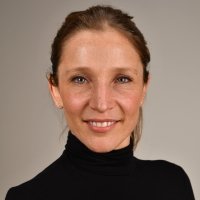Broadening Surgical Leadership to Shape the Future of Women’s Health

"Meeting such a diverse group of people and hearing from high-level educators and leaders was a privilege; even observing how faculty delivered lectures, captured attention, and engaged a professional audience was an education in itself."
Aya Mohr-Sasson, MD, is an assistant professor of minimally invasive gynecologic surgery in the Department of Obstetrics, Gynecology, and Reproductive Sciences at the University of Texas Health Science Center at Houston (UTHealth).
After completing her fellowship and beginning her faculty role, she was encouraged by her mentor to consider Harvard Medical School’s Surgical Leadership Program. As she explored further, Mohr-Sasson recognized that the program offered something unique: the opportunity to approach leadership in surgery through a broader, interdisciplinary lens.
Building Skills Beyond the Operating Room
As a gynecologic surgeon, Mohr-Sasson was confident in her technical skills and had prior experience serving as faculty in Israel before moving to Houston. Yet, she knew that developing as a leader required more than expertise in the operating room. The Surgical Leadership Program provided an opportunity to learn how to run teams, manage organizational challenges, and develop the vision needed to make systemic changes in health care.
“One of my main goals was to bring information, technology, innovation, and a different way of thinking,” she explains. “I wanted to enrich my leadership skills so that I could go back not just as a surgeon, but with more knowledge about running a team, especially in the surgical field, which is very different from other specialties.”
Throughout the program, she discovered tools that helped her refine her leadership approach. “You learn how to motivate people, evaluate progress, and define goals,” she says. For Mohr-Sasson, this clarity was transformative. “The program gave me both a broader spectrum and a clearer path. I gained the ability to step back, assess where I am, and set realistic strategies for the future.”
Gaining New Perspectives and Networks
One of the most rewarding aspects of the Surgical Leadership Program was the diversity of participants. Mohr-Sasson valued meeting surgeons and health care leaders from across the globe, each bringing their own cultural and professional perspectives.
“The more you practice, the more specialized you become, and your vision can narrow. Taking a break to see how things work in different specialties gave me a different perspective,” she says. “It made me look at my own teams, both here in Houston and the one I left in Israel, through a new lens.”
The program’s interactive structure emphasizes equal contribution from all participants, regardless of their background or seniority. “Each person came with a different point of view, but everyone had a place to talk and express their knowledge,” she notes.
Many of these interactions also turned into long-lasting relationships. “Meeting people from around the world gave me a network of good consultants and good friends,” she says. “We learned from each other’s experiences and supported each other’s growth.”
Turning Innovation into Impact
Mohr-Sasson’s capstone project focused on a subject that she had been passionate about for years: the use of platelet-rich plasma (PRP) to improve healing after cesarean delivery. The project offered her a unique opportunity to combine clinical innovation with leadership and communication skills.
“It gave me the tools to evaluate my project, refine it, and make it more appealing to others,” she says. “Even in medicine, you have to sell your idea. When you want to involve industry or secure funding, you need to be concise and precise.”
The program required Mohr-Sasson to develop an “elevator pitch,” a skill she had never practiced before. “Learning how to condense my project into a clear, engaging presentation was one of the most valuable skills I gained,” she says.
Her ability to pitch the project effectively has already produced results. “We had a few companies that were very interested in taking part in this project,” she shares. Today, her team in Houston is actively implementing the project using insights from the program.
The Value of Stepping Away
Beyond the academic and professional outcomes, Mohr-Sasson also appreciates the personal benefits of the program. “For me, it was a great break from work,” she says. “It gave me the chance to stop my ordinary routine and really focus on my development and skills.”
Looking back, Mohr-Sasson describes the program as “a thoughtful, well-designed mix of lectures, interactive sessions, and collaborative projects.” She found the three in-person workshops in Boston to be particularly meaningful.
“Meeting such a diverse group of people and hearing from high-level educators and leaders was a privilege,” she recalls. “Even observing how faculty delivered lectures, captured attention, and engaged a professional audience, was an education in itself.”
Looking Ahead
Reflecting on her program experience, Mohr-Sasson emphasizes the long-term value: “This is something that can refine your leadership vision. It’s a stop in your career that opens your mind to new ideas and new ways of leading.”
She now finds herself recommending the program to colleagues and peers who are considering leadership roles. “Whenever I meet someone at this stage of life, I tell them: this is something that can really improve you. Think about it.”
For Mohr-Sasson, the program was more than a leadership course—it was a transformative experience that expanded her perspective, strengthened her leadership skills, and equipped her to bring innovation to the communities she serves.
“The Surgical Leadership Program gave me significantly more than I expected,” she adds. “And I will carry those lessons with me throughout my career.”
Written by: Pamela Searle
